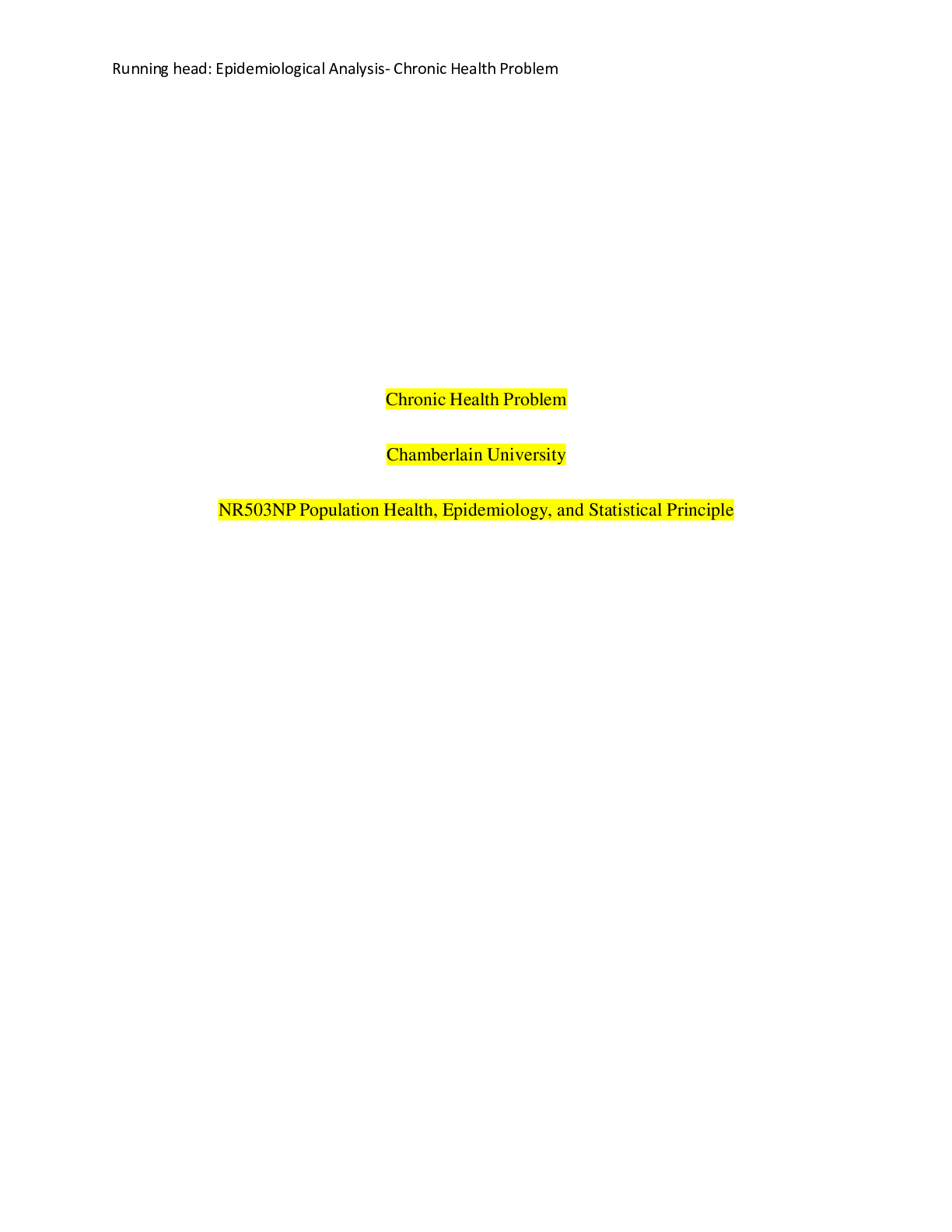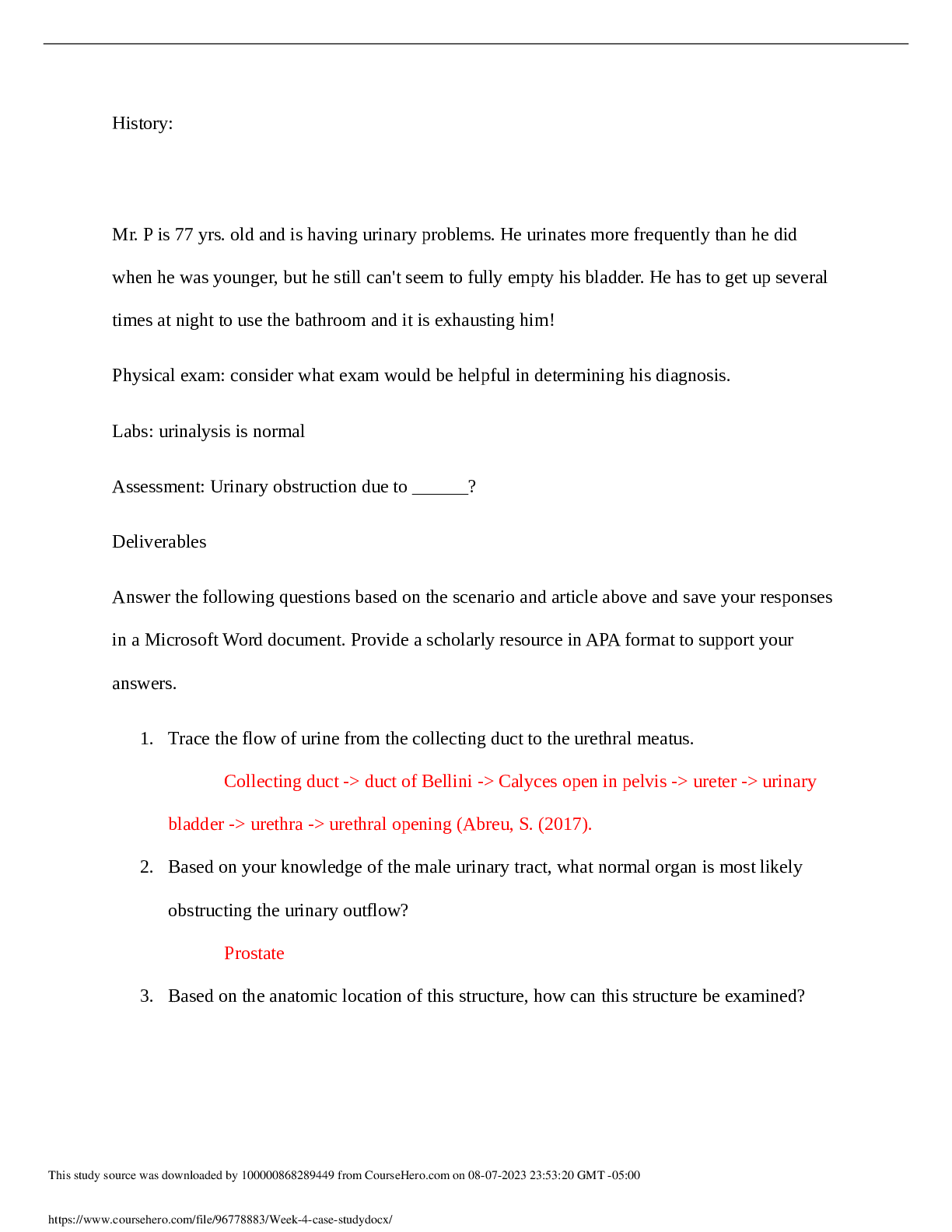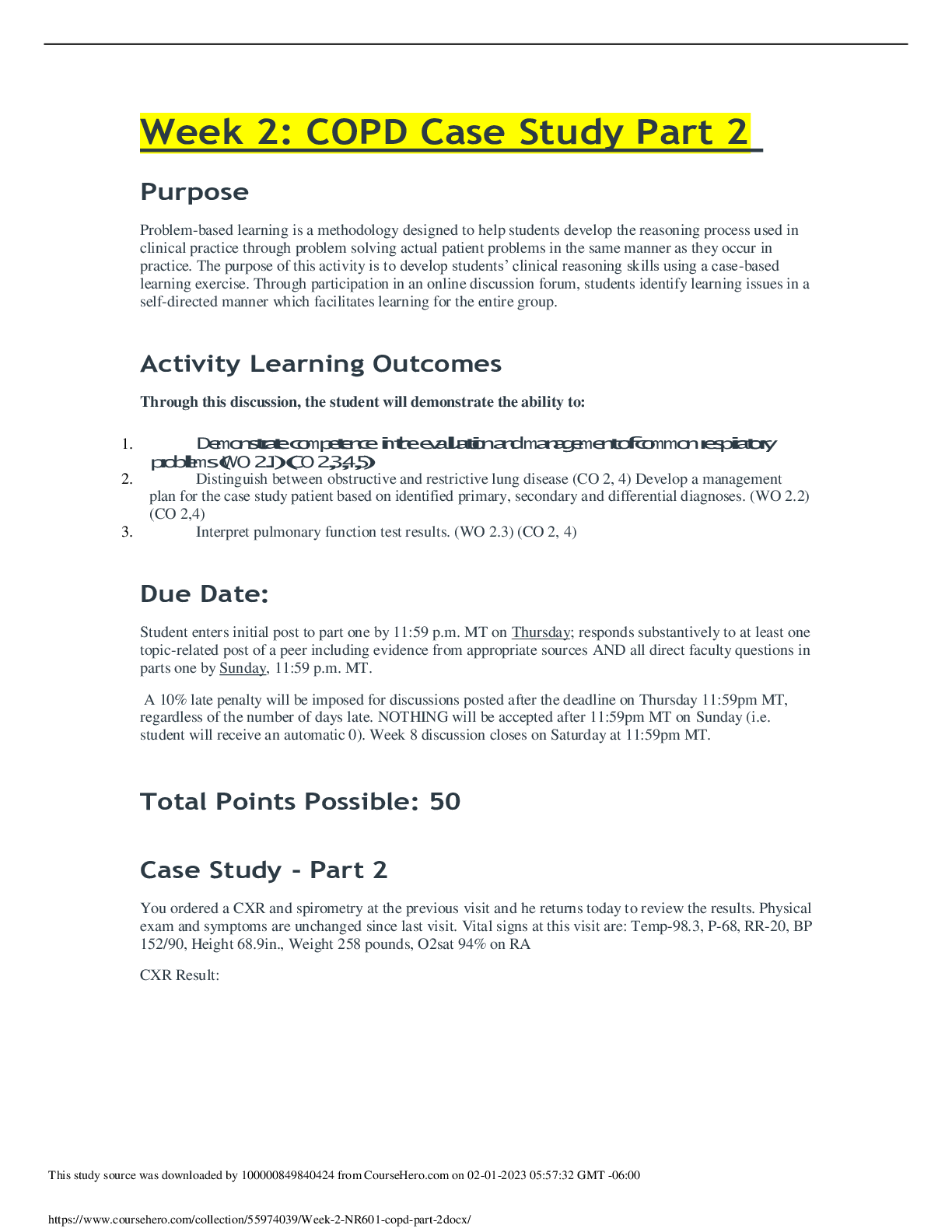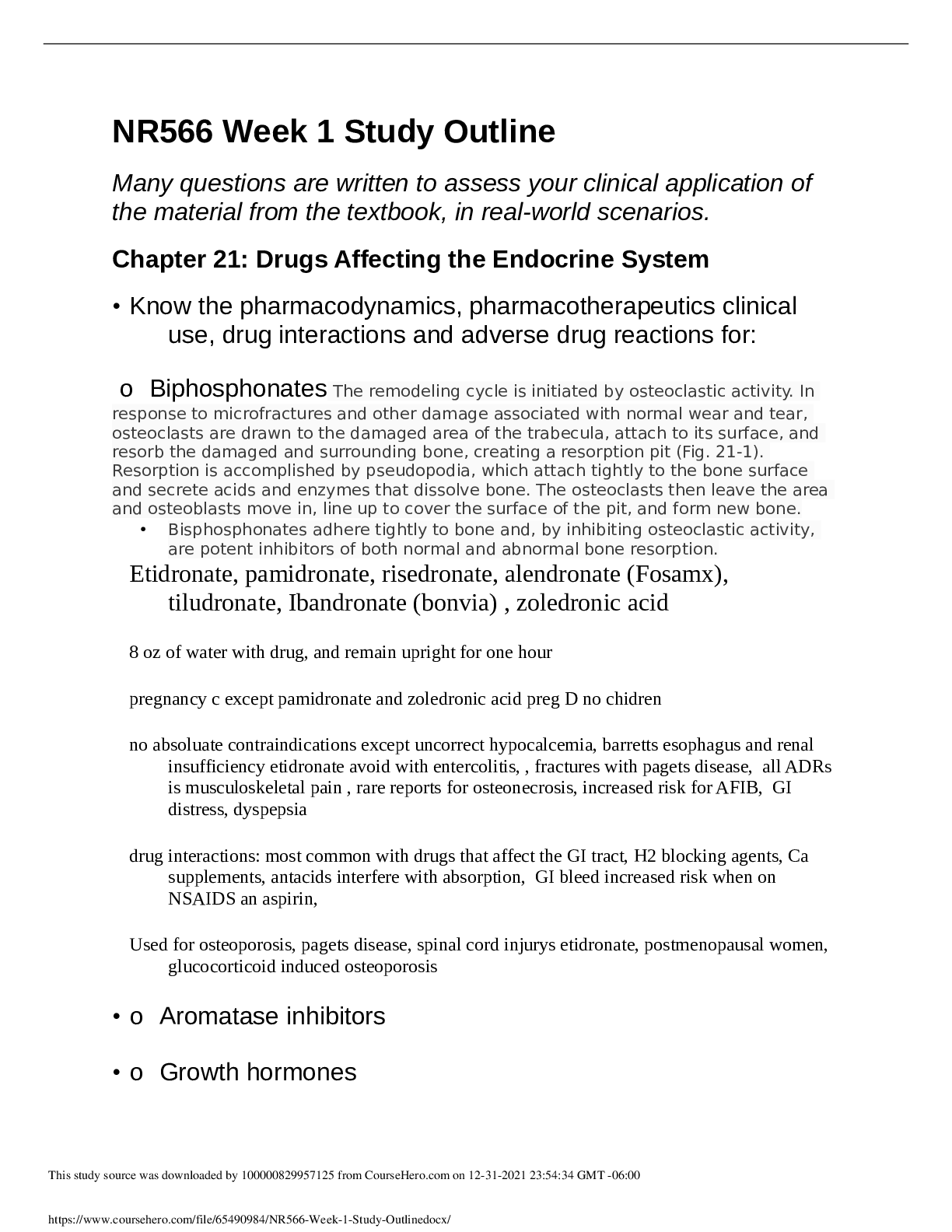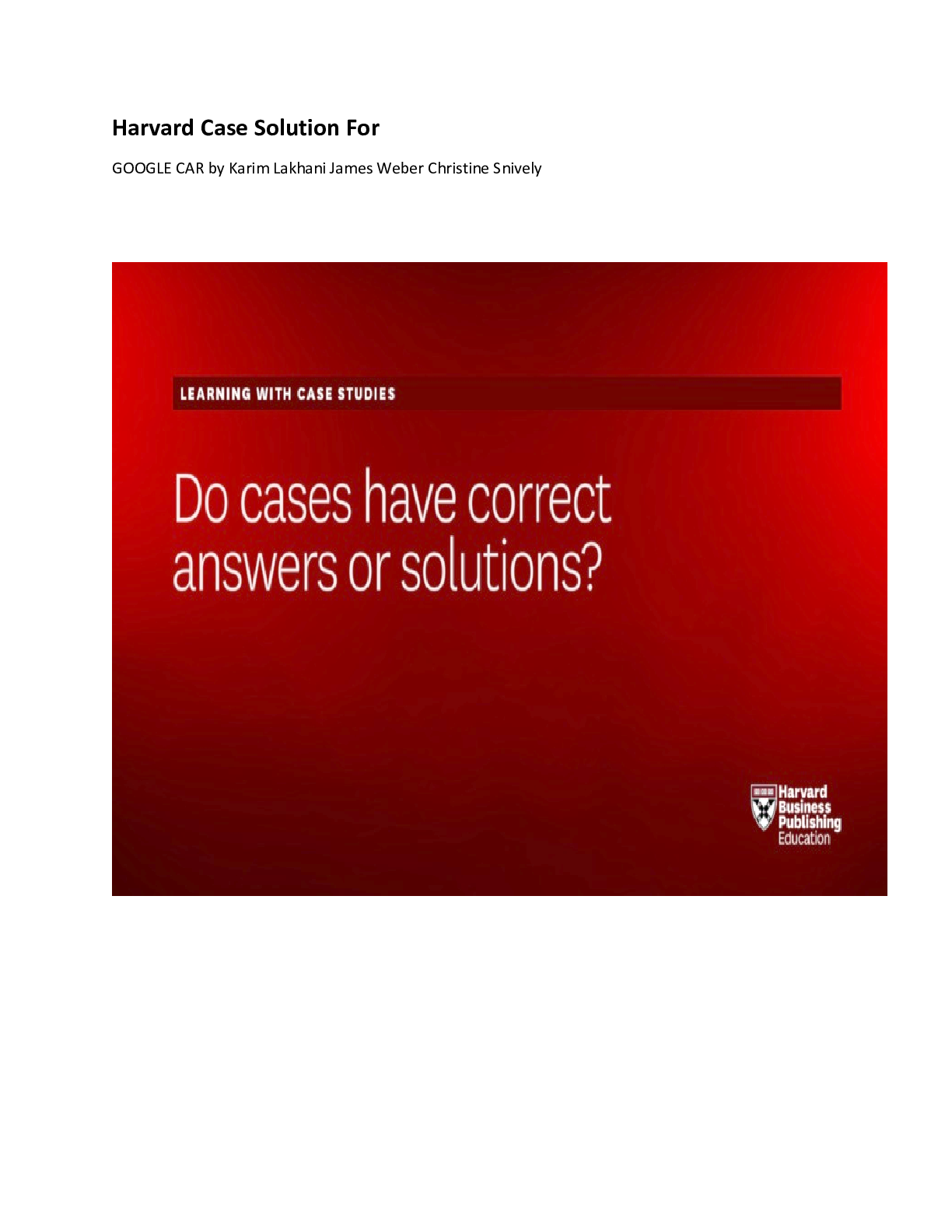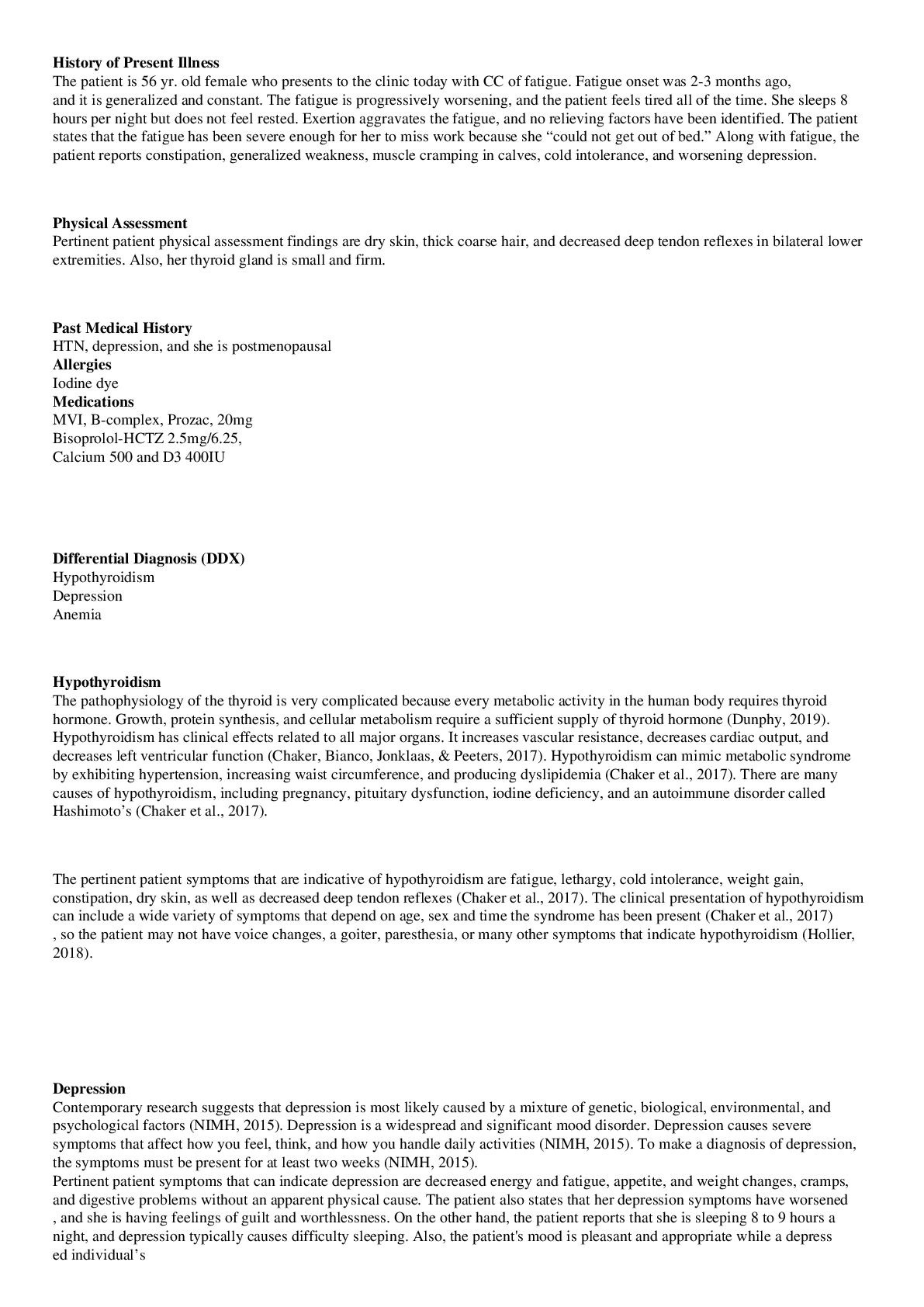Anatomy > CASE STUDY > BIOS-252 Week 6 Case Study Assignment: Diabetes (All)
BIOS-252 Week 6 Case Study Assignment: Diabetes
Document Content and Description Below
Week 6 Case Study: Diabetes Chamberlain University College of Nursing Anatomy & Physiology II with Lab The very next question after checking the level of consciousness and vitals was wh... ether he was diabetic, why? After assessing the patient's state of awareness and vital signs, it's crucial to determine whether the patient is diabetic, as the medical personnel detected a fruity odor in the patient's breath. Diabetic ketoacidosis is suspected when one's breath smells like fruit. Diabetic ketoacidosis is a life-threatening complication of diabetes that occurs when the body produces excessive amounts of ketones (CDC, 2021). The accumulation of ketones in the blood and urine causes the blood to become acidic (Saladin, 2019). Checking the patient's vitals and seeing if he's diabetic is crucial because it can help with quick medical interventions. Why would a hypoglycemic patient possibly present with a decreased level of consciousness? Because hypoglycemia occurs when blood sugar levels are lower than usual, a hypoglycemic patient may present with a reduced level of consciousness. Glucose is the body's primary energy source. When the body's glucose levels are low, it becomes weak and dehydrated, resulting in hunger, thirst, anxiety, confusion, dizziness, or unconsciousness in the patient (Mayo Clinic, 2020). The body does not create enough insulin in diabetes. Blood glucose builds up in the circulatory system. To lower blood sugar levels, doctors will prescribe insulin injections and other drugs. Hypoglycemia is a common adverse effect of several medications (Saladin, 2019). Why would a hyperglycemic patient possibly present with a decreased level of consciousness? Hyperglycemia is a condition in which the blood glucose level is abnormally high (Saladin, 2019) . Because the patient's blood thickens when blood sugar levels are exceedingly high, a hyperglycemic patient may present with a reduced level of consciousness. If left untreated, excess sugar in the blood causes a filtering process that eliminates a huge volume of fluid from the body, resulting in life-threatening dehydration and diabetic coma (Cleveland Clinic, 2020). If untreated, hyperglycemia can develop to diabetic ketoacidosis. The patient's breath has a fruity smell which is attributed to ketone bodies. Why are they present when the patient exhales and what is this state called? A diabetic's breath that smells like fruit signals a high level of ketones in the blood. Fats are processed when the body runs out of glucose to use as an energy source. The fat-burning process leads to a accumulation of acids in the blood called ketones, which can develop to Diabetic Ketoacidosis (DKA) if left untreated (CDC, 2021). As the body breaks down fat, it produces acetone, which causes the breath to smell sweeter. Acetone is a ketone with a fruity odor that is commonly found in nail polish remover. Diabetic Ketoacidosis is the name for this condition (DKA). An acetone-like stench in the breath may indicate diabetic ketoacidosis (DKA), a potentially fatal illness that necessitates prompt medical attention (CDC, 2021). If a diabetic's breath smells like acetone, this indicates that their blood is high in ketones. As the ketones pile up, the blood acidity rises. If there is too much glucose in the blood and not enough in the cells, ketone levels can become dangerously high. This will result in a coma and organ damage if medical help is not provided right away. References CDC. (2021, March 25). Diabetic ketoacidosis. Centers for Disease Control and Prevention. Retrieved November 30, 2021, from https://www.cdc.gov/diabetes/basics/diabetic- ketoacidosis.html. Diabetic coma: Causes, risk factors, treatment & prevention. Cleveland Clinic. (2020, December 2). Retrieved November 30, 2021, from https://my.clevelandclinic.org/health/diseases/16628- diabetic-coma. Mayo Foundation for Medical Education and Research. (2020, April 3). Diabetic hypoglycemia. Mayo Clinic. Retrieved November 30, 2021, from https://www.mayoclinic.org/diseases- conditions/diabetic-hypoglycemia/symptoms-causes/syc-20371525. Saladin, K. (2019). Anatomy and Physiology: The Unity of Form and Function (9th ed.). McGraw-Hill. [Show More]
Last updated: 2 years ago
Preview 1 out of 4 pages

Buy this document to get the full access instantly
Instant Download Access after purchase
Buy NowInstant download
We Accept:

Reviews( 0 )
$11.50
Can't find what you want? Try our AI powered Search
Document information
Connected school, study & course
About the document
Uploaded On
Sep 06, 2022
Number of pages
4
Written in
Additional information
This document has been written for:
Uploaded
Sep 06, 2022
Downloads
0
Views
183



